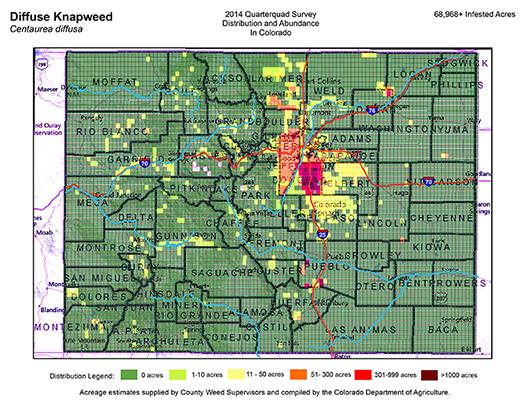Diffuse knapweed
(Centaurea diffusa)
Diffuse knapweed is a non-native biennial forb that reproduces solely by seed. A biennial is a plant that completes its life cycle within two years. During the first year of growth, Diffuse knapweed appears as a rosette in spring or fall. During the second year in mid to late spring – the stem bolts, flowers, sets seed, and the plant dies. Once the plant dries up, it breaks off at ground level and becomes a tumbleweed which disperses the still viable seeds over long distances. A prolific seed producer, Diffuse knapweed can produce up to 18,000 seeds per plant. Therefore, the key to managing this plant is to prevent seed production. Diffuse knapweed can grow 1 to 3 feet tall and is diffusely branched above ground. This gives the plant a ball-shaped appearance and tumble-weed mobility when broken off. Leaves are small and are reduced in size near the flowering heads. Flowers are mostly white, sometimes purple, urn-shaped, and are located on each branch tip. Bracts that enclose the flower heads are divided like the teeth of a comb and are tipped with a distinct slender spine. Upon drying, the bracts become rough, rendering them injurious to the touch. Flowers bloom July through August. Seed set usually occurs by mid-August.
